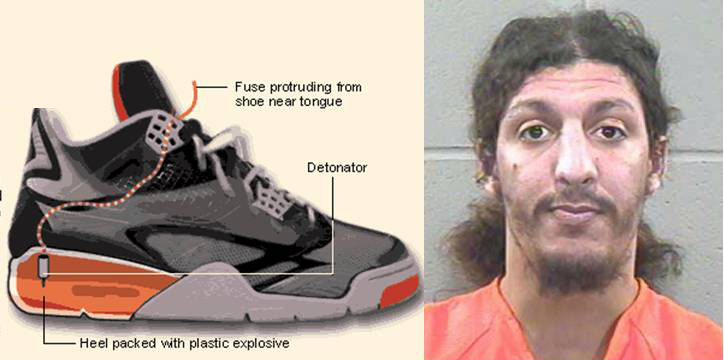Case Study: Richard Reid – The Shoe Bomber

Past events show us that while terrorists are good at concealing IEDs, they are not so good at hiding the fact that they are terrorists.
On December 22nd, 2001, Richard Reid arrived at Charles de Gaulle Airport in Paris ready to board American Airlines flight 63 to Miami, Florida.
He arrived looking disheveled, with a light knapsack, and a brand new passport taken in Belgium on the 7th of December.
A security agent had doubts, and turned him over to french border police who grilled him at the airport, and later at a hotel, after he missed his flight.
When Reid’s possessions were searched, airport security found a walkman and cassette with recordings of the Koran, as well as anti-Israeli messages. Reid also had a copy of Time magazine titled “Islam in Europe” and an issue of Newsweek with a picture of Osama Bin Laden.
When probed about the purpose of his trip, he told authorities he intended to visit an aunt in Antigua.
Further, French court documents reveal that “the thirteen witnesses interviewed regarding this inspection procedure – policemen, security agents and agents of American Airlines – indicated that they had been troubled, indeed perplexed, by the personality and the behavior of Richard Reid, described as filthy, very unkempt, emotionless and not attempting to find out why he was being subjected to an inspection. He did not appear at all anxious…”
Nonetheless, background checks reportedly returned nothing suspicious, and, after a pat down search, Reid was allowed to board an American Airlines flight the next day.
As Flight 63 was flying over the Atlantic Ocean Passengers on the flight complained of a smoke smell
Reid was initially found sitting alone near a window, attempting to light a match and was warned that smoking was not allowed.
A few minutes later, Reid was found leaning over in his seat with one shoe in his lap, a fuse leading into the shoe, and a lit match.
Fortunately, Reid was subdued by flight attendants and other passengers on the aircraft, using plastic handcuffs, seatbelt extensions, and headphone cords.
Subsequent information showed he had over 100 grams of plastic explosives TATP and PETN concealed in the hollowed soles of his shoes that, if successful, would have blown a substantial hole in the aircraft.
Analysis
This event shows us the creativity of terrorists when concealing IEDs and the difficulty in detecting them.
The bomb was virtually untraceable using conventional security technologies:
- At the time of his attack, Richard Reid would not have been required to remove his shoes and put them through the x-ray machine.
- Given that his bomb had no metallic components, a metal detector would have found nothing.
- As he had very little luggage, it is unlikely that an explosive trace detector would have found anything
Reports uncovered during Reid’s trial show that 5 months earlier he had flown into Tel Aviv, Israel on El Al Airlines to do some scouting. The U.S. government’s sentencing memorandum in Reid’s case states, “During his trip, Reid focused on El Al security at the airports and aboard his flight. He later claimed that the idea of placing explosives in his shoes came from his observations of El Al security, and the fact that security personnel did not check the insides of his shoes.”
In a report on his travels, later found on Al-Qaida number two Ayman al-Zawahiri’s computer in Afghanistan, Reid documented ten questions El Al security asked him, including, “why do you want to go to Israel?.”
El Al spokesman Nachman Klieman reported that “the red light went off immediately because of the way he answered questions.”
When Reid was finally allowed to board the plan to Tel Aviv, he was seated close to an armed air marshal, and, according to Kleiman, “remained under scrutiny the whole way.”
Documenting the scene on the plane, Reid’s report established that “generally flight attendants are security and there are [security] people sitting among the passengers.”
In this case, the border police did identify the suspicion indicators but were not able to confirm them.
As they were looking for the bomb, they completely ignored the fact that they had the bomber.



